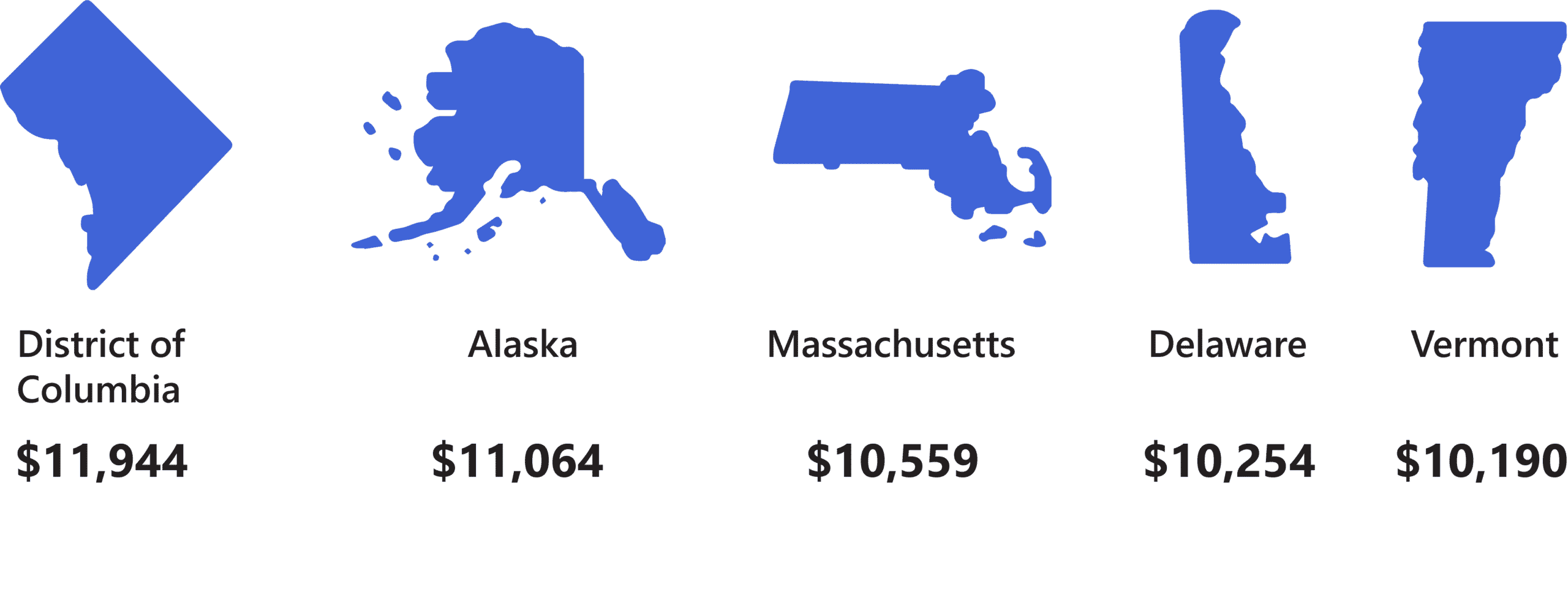
Health care is essential. At least once in our lives, every single one of us will grapple with a health condition that leads to healthcare spending.
Health care spending rises yearly, hitting our pocketbooks hard -- especially for people without insurance. In addition, the COVID-19 pandemic has forced the United States and other countries worldwide to invest considerable amounts of money in health care systems.
But what about low-income countries? What have they done?
DebtHammer has compiled a list of the most relevant and interesting statistics for you, categorized into the chapters below.
Global health care spending statistics
Health care spending varies from country to country. The GDP, a measurement of the monetary value of finished goods and services, may indicate that one country invests more than another in its health care systems.
A country's economy is in good shape if its GDP grows, and with a strong economy comes larger investments in healthcare systems. A lower GDP is terrible news for every industry, but it's especially disastrous for the healthcare sector.
- The global GDP over the years has increased from 8.63 in 2000 to 9.83 in 2019. This figure indicates that countries' GDP growth, which has slowed over the past 19 years, with only a 1.2% change.
- Burundi has the lowest GDP per capita in the world ($272.14). The other three countries with the lowest GDPs are South Sudan ($364.39), Somalia ($486.53), and Mozambique ($500).
- Before the pandemic, global health care spending was increasing steadily, but more slowly. In 2018, global spending totaled $8.3 trillion, or 10% of the world's GDP. This was the first time that health care spending increased at a slower rate than the GDP.
- Countries' health care spending remained unequal. About 75% of the global health care spending was in America and Europe. Another 19% of was spent in the Western Pacific. Southeast Asia and the Eastern Mediterranean region each account for 2%. The remaining 1% is spent in Africa.
5.
![Hospital receptionist [Recovered]](http://debthammer.org/wp-content/uploads/2022/08/Hospital-receptionist-Recovered-5-1024x426.png)
U.S. health care spending statistics
A global superpower like the U.S., with a steadily growing economy, spends a considerable amount of money on the healthcare system, which is then divided into different sectors, including hospital care, physician services, clinical services, and many more. But how much does it actually spend, and what is its GDP?
1. The estimated U.S. government health care spending for 2022 is $9.32 trillion.The estimated U.S. government healthcare spending for 2022 is $9.32 trillion. This includes $5.85 trillion in federal funds, $2.36 trillion in state funding and $2.32 trillion locally.
2. The $4.1 trillion that was spent in health care was divided into various sectors within the industry. Let’s examine how much the United States spent on each sector in 2020:
![Pie Chart 1 [Recovered]](http://debthammer.org/wp-content/uploads/2022/08/Pie-Chart-1-Recovered.png)
3. In 2020, private health insurance paid for 27.9% of medical expenses. Besides private health insurance, there are other ways of paying the bill, such as:
![Untitled-4 [Recovered]](http://debthammer.org/wp-content/uploads/2022/08/Untitled-4-Recovered-4.png)
4. In 2020, the United States spent $4.1 trillion on its health care systems. When compared to global healthcare spending, the U.S. spent more than half of the $8.3 trillion spent globally on healthcare. In other words, the U.S. spends $12,530 per person and currently has a GDP of 19.7%
5. Medicare and Medicaid spending increased in 2020. Medicare spending rose by 3.5%, for a total of $829.5 billion in 2020. Medicaid saw a more significant growth rate of 9.2%, totaling $671.2 billion.
6. When it comes to health care spending per person, the United States, Germany, Norway and Austria are the countries that lead the pack. The U.S. spends the most, at $12,530 per person. Germany is next, spending $7,383 per person. Norway is third with $7,179, followed by Austria with $6,693.

The five biggest per-capita spenders in the U.S.
7. The average monthly premium for a 60-year-old costs twice as much as for an 18-year-old. An 18-year-old pays $324 on average, compared to $642 for a 50-year-old and $970 for a 60-year-old.
8. The cost of long-term care insurance varies depending on the age, health, and specific policies of the insurance provider. Long-Term Care can cost $950 annually for a 55-year-old male. The equivalent coverage for a 55-year-old woman is $1,500.
Health care spending statistics in the future
Excellent health care is key to survival. The United States and other nations need to invest in healthcare in order to increase the GDP. Below, we'll explore several predictions about the future path that health care may take.
1. Prices for medical goods and services will increase. Prices are predicted to rise by an average of 2.4% per year. This is expected to lead to a boost in wages of healthcare jobs.
2. Medicare will see the fastest growth. Medicare currently pays for 20.5% of medical expenses and is projected to increase sharply over the next few years, with an average of 7.6% increase of per year.
